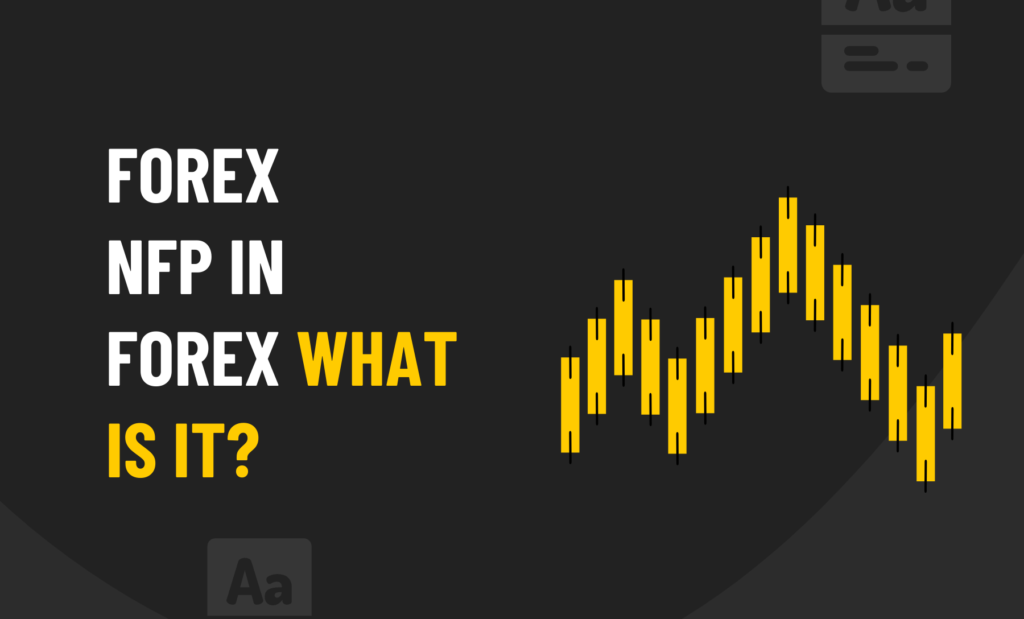Non-Farm Payroll, or NFP, is a valuable measurement of the economy. In addition to the number of jobs added, it includes data regarding the number of government employees, excluding farm workers, private household service employees, and employees of non-profit organisations. Often, this is the most important day of the month for the Forex market. Unlucky traders may lose a fortune if they trade poorly on this day, while those who are successful may finish the month in the black.
A significant change has taken place in the forex market as a result of this release. But what exactly is NFP? Worry no more; we got you covered!
Find out more about NFP in Forex in the article below!
Non-Farm Payrolls (NFP)
This measure of employment is part of a monthly report that shows how many people are employed in manufacturing, construction, and goods companies throughout the United States. In addition to being an important economic indicator, it also indicates income level.
Most people pay attention to the NFP component because it estimates the number of full-time and part-time employees in the business and government sectors. These figures are released on the first Friday of every month and can be highly volatile. There are a large number of analysts who predict NFP figures ahead of their release.
How NFP Affects Forex
Because it is released every month, NFP data provides a good indication of the current state of the economy. An economic calendar shows when the Bureau of Labor Statistics will release the next release of the figures.
Federal Reserve Bank uses employment as a significant indicator. During times of high unemployment, monetary policy stimulates with low-interest rates. Economic output and employment increase when monetary policy is expansionary. In other words, if unemployment is higher than usual, policymakers try to stimulate it. Low-interest rates and reduced Dollar demand result from a stimulatory monetary policy.
A sudden rise in volatility could result in traders getting stopped, so they need to be wary of NFPs. Spreads increase in response to volatility, and increased spreads may trigger margin calls.
Which Currency Pairs Are Affected?
NFP measures the level of employment in the United States. Therefore, all currency pairs that include the US Dollar (EUR/USD, USD/JPY, GBP/USD, AUD/USD, USD/CHF and others) are most likely to be affected.
In addition to the USD, other currency pairs also show an increase in volatility when the NFP is released. Traders should be aware of this risk because they might get stopped.
Release Date and Time
Forecasts are released ahead of the nonfarm payrolls announcement, indicating the expected number. As the payroll figures are released, it may take the markets by surprise and affect the US dollar, Dow Jones Industrial Average and the headline stock market indices negatively or positively.
It is typically released on the first Friday of every month at 1:30 pm (UK time), or 8:30 am (EST) and provides traders with month-over-month and year-over-year comparisons. Monthly figures compare last month with the month before, while year-on-year figures compare last month with the same month a year ago.
How to Read the NFP?
During the prior month, the NFP measured the number of jobs created or lost in the U.S. economy. For example, -1000K means 100,000 jobs in all non-agricultural businesses were lost.
When looking at previous NFP releases, it is helpful to review the history. Analyse the long-term trend of NFP figures and determine if it’s rising or falling. Check whether recent reports were near historical highs or lows by keeping track of the ranges.
Strategies for Non-farm Payroll Trading
Due to the many investors watching this data release, the payroll data may cause the financial markets to move sharply, either up or down, depending on how close the actual figure is to the estimates made ahead of the data release. Trades on non-farm payrolls can be made in a few different ways, with the most popular strategies fading the initial move and trading the trend.
You can wait and watch how the markets react if the news is released. When data is released for the first time, there is often an immediate knee-jerk reaction because market movements can be volatile. It is possible to combat this by ‘fading’ the initial move.
In addition, traders can assume an initial reaction is accurate. Markets typically move after non-farm payrolls are announced, so this could indicate the start of a trend for the following day.
To confirm a new trend, traders often refer to previous benchmarks. If the price has broken the day-ago high, there is a new trend. As a result, some might begin to expect the markets to move higher if this were true.
Alternatively, you can trade a few minutes before the figure is released. If the view turns out to be inaccurate, risk management allows you to close that position.
Conclusion
The non-farm payroll (NFP) figure is a key economic indicator for the United States economy. It represents the number of jobs added, excluding farm employees, government employees, private household employees, and employees of nonprofit organizations.
Frequently Asked Questions
What is non-farm employment change?
Another term for non-farm payrolls is non-farm employment change. It is sometimes referred to as non-farm employment change instead of NFP because the NFP figure shows how many jobs have been added or lost in the sectors included in the report.
Why is NFP important?
In addition to providing fresh insight into the health of the U.S. economy, the report gives a snapshot of how the labour market is doing. The stronger the labour market, the more people will earn and the more they will spend.
Does NFP affect GBP pairs?
The NFP report can significantly impact all major currency pairs, but one of the favourites is the GBP/USD.
Should I trade on NFP?
The NFP strategy is ideal for long-term trends. Statistics on unemployment often affect long-term trends, and prices tend to move in the direction determined by non-farm payroll data. These data reveal whether the month will be bullish or bearish for traders.



